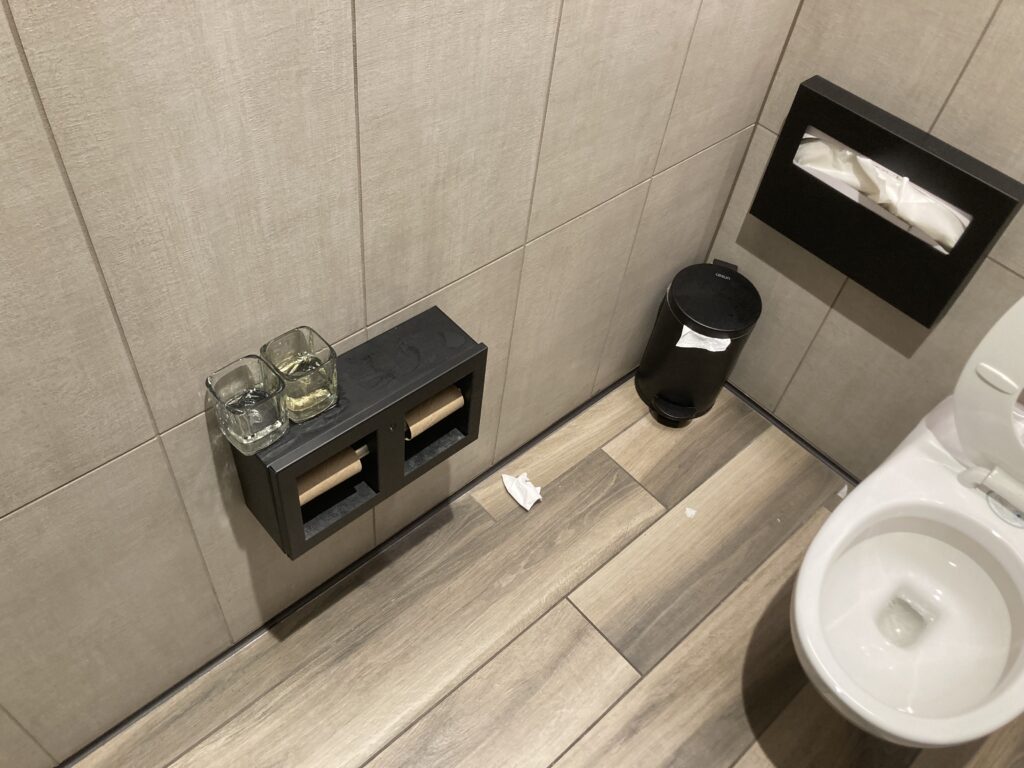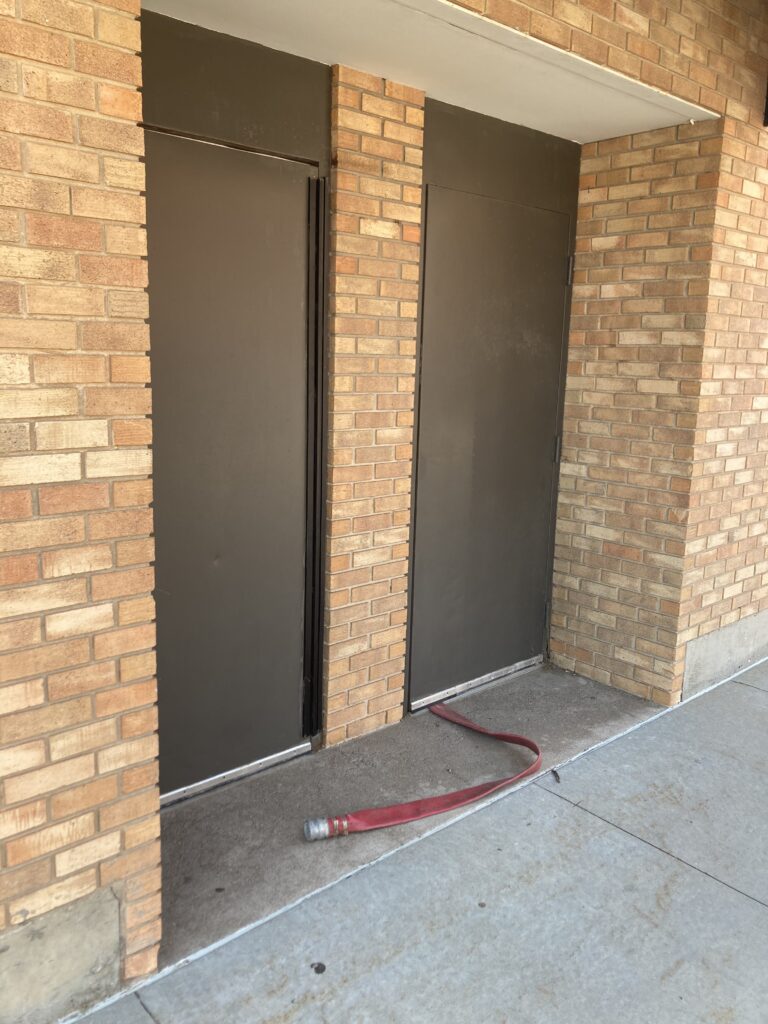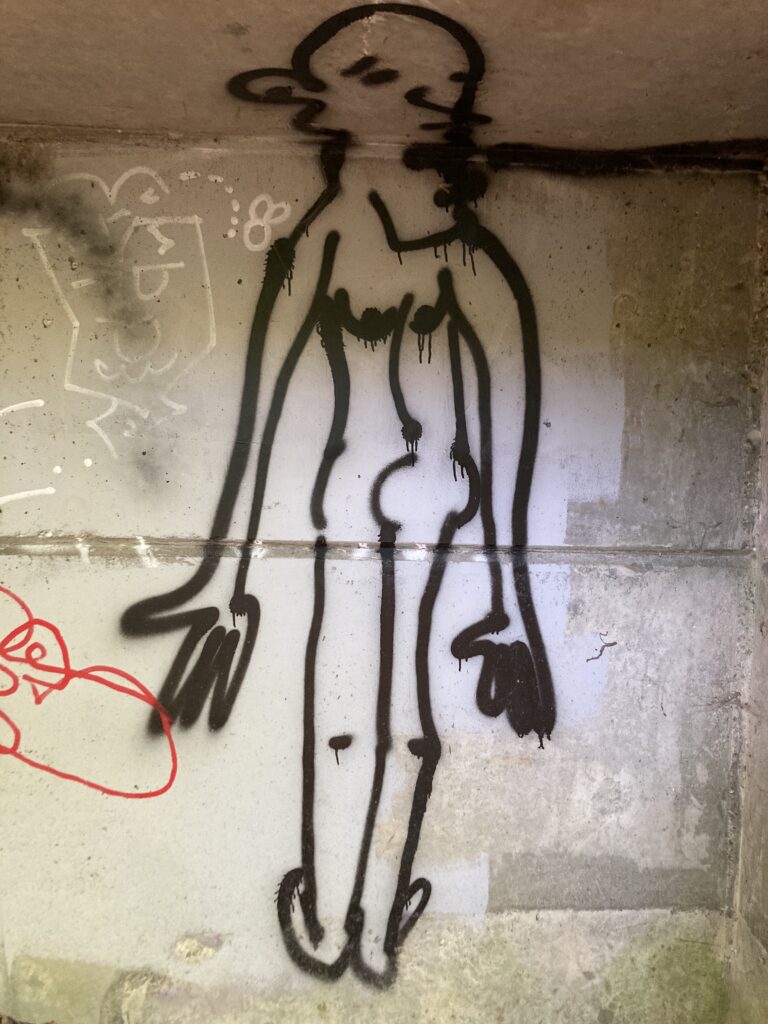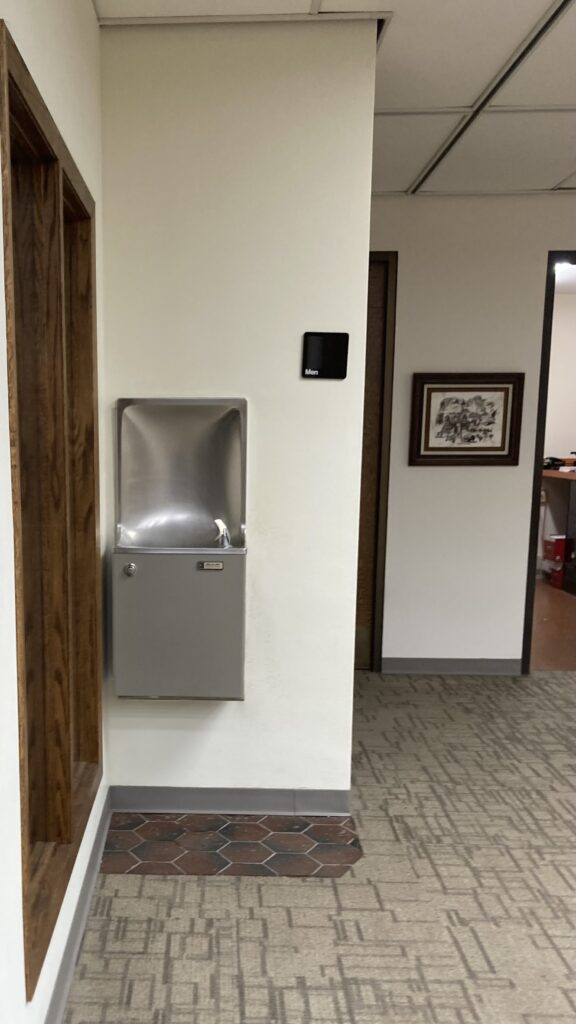
The brainchild of a disheveled literary agent out of New York, ‘The Library of Unpublished Novels’ is continued disappointment to its creator. Intended to be a trove of hidden gems, Mick McDowell (formerly of McDowell Literary), has endeavored to do right by clients of ‘The Library,’ paying them a (reduced) lump sum for all rights to any novel that has been unsuccessful on the market for more than two years. The printed copies of these book are hardcover and smyth-sewn and seated on shelves in an expansive, but under-visited venue in rural Wisconsin (where rent is cheap).
Unfortunately, the books are largely trash and few, if any, of the rights turn a profit or break even. Those that have made money (via limited print releases from McDowell himself or lowballed movie rights) are not any better than the others, in fact, they tend to be virally bad, generating profit solely from creative masochists. When ‘The Library of Unpublished Novels’ get any attention at all, it is almost always the wrong kind of attention and McDowell himself is inevitably painted as a bully, making money from the woes of failed authors.
He does what he can to tell people the truth.
There is no money. No prestige. He has nothing but this monument to failure.
But sometimes his clients get to hold their books.
And that’s something.
-an excerpt, Autumn by the Wayside
Those who have been on the Wayside longer than I have tell me that the difficulty of obtaining information about any one place or phenomenon foretold the same difficulty we now face with internet research. There’s just too much information. And most of it is bad. A solid 70% consists of the ramblings of madmen and certain individuals can claim double-digit contributions. Another 20%, at least, is well-meaning folklore masquerading as fact. Of the 10% remaining, it’s difficult to say, but much of the information that might qualify as ‘good’ is inevitably contradicted by other ‘good’ information. Do I trust vintage wisdom over the sterility of modern science? Maybe when my life is on the line.
There’s something you don’t often say about the internet.
‘He’s called ‘Old Smokey’ and he’s a dragon, though it’s difficult to see. Partly due to size, partly due to weathering, and partly due to the incompetence of his creators, ‘Old Smokey’s’ form is rough and blocky, each part of him looking like a mildly-vandalized aspect of the Earth. Those lucky enough to fly over in good weather might recognize the dragon as a sort of constellation of forest-born cysts, bulging from the dirt and misdirecting the trees in a pattern that does seem reptilian. And those who visit his head will see it, though it’s a long a difficult hike and people say all sorts of things about the mouth and what sometimes emerges from inside.’
A tongue is the strangest and least likely, I’d say, but staring at the visage of ‘Old Smokey’ and seeing the dark of his cavernous gullet makes me cautious all the same. Much of the information I came across tells me this hill used to be a volcano and that the tales of smoke and gas emerging from ‘Old Smokey’s’ mouth are probably due to degrading tectonics deep below. Likelier, in my mind, is that idiots like me sometimes come up here too late and start fires, creating intermittent pockets of legend that keep the stories fresh.
I step carefully toward the mouth and the black inner seems to grow to encompass my vision. When I wake I see the too-close and worried faces of a young couple. My head is pounding to a beat I haven’t heard in a while: the rhythm of coming down from something. When I sit up the woman screams like she’s seen a man return from the dead. They tell me they’ve tried to call an ambulance but they don’t know if the call went through. I look for ‘Old Smokey’ and see he’s a ways away now. I’ve been dragged.
Drugged.
I stumble away from the couple at my first chance, claiming I’m off to piss and that I’ll definitely wait for medical attention. Not my first time running from good samaritans but it never feels great.
When I have my head again- when there are miles between me and ‘Old Smokey’s’ perch- I put my own thoughts out there. I try to tell people ‘Old Smokey’ is probably spouting some amount of natural gas, which explains the occasional combustion, the hallucinations. The disappearances.
My post is taken down for violating an obscure forum rule several hours after I post and I don’t know that I’ll ever get around to warning people again.
-traveler
‘There is no ‘Autumn by the Wayside’ pop-up shop. No booth. No storefront. Not even a man selling t-shirts out of the back of a pick-up truck.
Not officially anyway.
Unofficially speaking, there does seem to be something or someone out there because you’re hardly the first to ask. The answer, however disappointing, is ‘no.’ We don’t strive to make money off the Wayside and we’ve been successful in that endeavor and that endeavor alone.’
Of course I stop. Why wouldn’t I? Nearly a decade, now, I’ve followed the winding path this guide puts forth and I have nothing to show for it but wrinkles and scars and a budding nervousness that I worry may bloom into general anxiety or acute paranoia. I see the Stranger, still, though I hardly mention him anymore. It’s difficult for me to know whether he’s really there in those moments, always a face in a crowd or a swiveled head in a passing car or a snapshot reflection. I wonder if he thinks I’m following him. That’s a worry, too.
When I see a booth in a dead mall at the very edge of northern Texas that claims to sell official Wayside merchandise, that is “Merchandise licensed by the hit guide, ‘Autumn by the Wayside,’ I stop. Of course I do. I loiter near the window and note that, by the collection of dust, this impermanent installation seems to have been here for quite some time.
The window boasts the usual suspects: an arrangement of hats and t-shirts with the Guide’s faded logo. There are koozies and coasters and a few engraved bottle openers. My eyes are drawn to a display just inside, boasting rare, out-of-circulation items. Artifacts from ‘The Immolated Kat Cirkus’ pre-immolation, for instance. Jars of cat hair that appear to be only moderately singed. And needles from ‘The Thirsty Cactus’ taken before it was downed by lightning.
And beside that a sign that says: We have the key to the room you’ll be locked in (prices vary).
And beside that the Stranger, looking bored.
I blink and he remains. Not a reflection or a memory, but the Stranger himself, looking older the way I look older. He doesn’t see me- looks over as soon as I think it.
I’m gone around the corner before he finishes the turn. The Stranger, his obsidian rabbit-thing in a bed on the counter. Both healthy in a way that neither Hector nor I have managed. And rooted? I risk another look and see he’s gone back to boredom. But it isn’t boredom. He’s reading. And maybe content.
Contentment seems so far off that I didn’t recognize it at first.
The Stranger turns toward me again and I run. I don’t want to be seen, still searching. And I don’t want him looking for me if he isn’t already.
-traveler
‘There was a culturally significant silence- an intake of breath- when ‘The Statue of a Human Man’ and ‘The Statue of a Human Woman’ appeared in the streets of Boston, bringing to end a year’s anticipation of the event. Early previews consisted entirely of interviews with the artist, well-known sculptor Steven Lock, who talked at length about the difficulties of distilling the universality of what it means to be human into two images. Guesses as to the final shape of these installations ran the gamut but most agreed they would be abstract, by default, and likely ironic. Two identical lumps of copper, maybe, or deeply intricate renderings of male and female reproductive systems. One popular theory suggested Lock would install mirrors, allowing viewers to recognize themselves as the platonic form of humanity under whichever title they choose.
That, at least, would have been cheap.
Contrary to expectations, the statues look like male and female representations out of a vintage science textbook, though critics have noted their proportions skirt the edge of pornography. Their sexual details have largely been rounded out and rounded up, the man’s groin and the woman’s bust highly exaggerated but lacking the detail that might warrant legitimate public complaint.
Though people have complained.
When people complained that the statues were simplistic and, in their simplicity, were alienating, the city shrugged its shoulders and asked if the public could do a better job. When several members of the public demonstrated that they could, the city shrugged it shoulders and said there was no budget. When members of the public offered to do it pro-bono, the city pretended to not know what the word meant.
Further complaints took the form of vandalism.
‘The Statue of a Human Man’ and ‘The Statue of a Human Woman’ no longer look like anything humanity has produced through nature. They do not look human at all.
But the people are happy.’
-an excerpt, Autumn by the Wayside
‘Among a gathering of low hills in southern Kansas, a traveler may begin to see signs for ‘The Mister-EE Spot,’ billed largely in the familiar shape of Wayside destinations that proclaim some inherent mystical property (pun intended). Notable about the signs is the sheer number of them and the state of their decay, which is not at all consistent but instead exists along a whole spectrum of general sunbleaching and woodrot. The signs age and fall apart without repair and new signs are posted in their place (or nearby). Photographic evidence suggests that new signs will sometimes give direction to ‘The Mister-EE Spot’ that are in direct opposition to those previously posted.
None of the signs tell the truth.
‘The Mister-EE Spot’ does not exist on any online map. Not reliably. There have attempts to pinpoint it and so ‘The Mister-EE Spot’ does sometimes appear as a destination and sometimes even as multiple destinations in the same vicinity. These best-guesses are normally removed within a few weeks when a quorum of frustrated users have contacted the map service, having failed to locate ‘The Mister-EE Spot’ or anything that looks like it might have once been anything like it. ‘The Mister-EE Spot’ has been marked ‘permanently closed’ several times but the signs keep coming.
Testomonials from those who claim to have found ‘The Mister-EE Spot’ offer some insight into what the place may be. Most describe it as a series of mundane but puzzling illusions, not unlike those cheezy attractions at the standard and more accessible mystery stop-off. A man appears shorter than his wife. Water runs up hill. A dog speaks. But there is no denouement at ‘The Mister-EE Spot.’ Visitors are given time to examine the exhibitions for tricks and have found none. It is a place of magic, they say- of mystery.
And they never find their way back.’
This is the closest I’ve gotten to ‘The Mister-EE Spot,’ I think. Four hours of missing time in Kansas. I emerge starving and half an inch shorter, wearing broken-in shoes I have never seen. A video clip on my phone appears to have been taken in the pocket of my jacket. I hear myself laughing, the way I do when I’m surprised. Somebody else nearby cheers and the video ends. My location at the time of the video was not logged. My phone is fully charged.
Not sure how to count this one.
-traveler
Rear View Mirror
- November 2025
- October 2025
- September 2025
- August 2025
- July 2025
- June 2025
- May 2025
- April 2025
- March 2025
- February 2025
- January 2025
- December 2024
- November 2024
- October 2024
- September 2024
- August 2024
- July 2024
- June 2024
- May 2024
- April 2024
- March 2024
- February 2024
- January 2024
- December 2023
- November 2023
- October 2023
- September 2023
- August 2023
- July 2023
- June 2023
- May 2023
- April 2023
- March 2023
- February 2023
- January 2023
- December 2022
- November 2022
- October 2022
- September 2022
- August 2022
- July 2022
- June 2022
- May 2022
- April 2022
- March 2022
- February 2022
- January 2022
- December 2021
- November 2021
- October 2021
- September 2021
- August 2021
- July 2021
- June 2021
- May 2021
- April 2021
- March 2021
- February 2021
- January 2021
- December 2020
- November 2020
- October 2020
- September 2020
- August 2020
- July 2020
- June 2020
- May 2020
- April 2020
- March 2020
- February 2020
- January 2020
- December 2019
- November 2019
- October 2019
- September 2019
- August 2019
- July 2019
- June 2019
- May 2019
- April 2019
- March 2019
- February 2019
- January 2019
- December 2018
- November 2018
- October 2018
- September 2018
- August 2018
- July 2018
- June 2018
- May 2018
- April 2018
- March 2018
- February 2018
- January 2018
- December 2017
- November 2017
- October 2017
- September 2017
- August 2017
- July 2017
- June 2017
- May 2017
- April 2017
- March 2017
- February 2017
- January 2017
- December 2016
- November 2016
- October 2016
- September 2016
- August 2016




